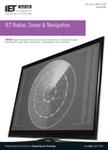版权所有:内蒙古大学图书馆 技术提供:维普资讯• 智图
内蒙古自治区呼和浩特市赛罕区大学西街235号 邮编: 010021

作者机构:Nanjing Univ Informat Sci & Technol Collaborat Innovat Ctr Forecast & Evaluat Meteoro Nanjing Jiangsu Peoples R China Nanjing Univ Informat Sci & Technol Jiangsu Key Lab Meteorol Observat & Informat Proc Nanjing Jiangsu Peoples R China Nanjing Univ Informat Sci & Technol Sch Elect & Informat Engn Nanjing Jiangsu Peoples R China
出 版 物:《IET RADAR SONAR AND NAVIGATION》
年 卷 期:2017年第11卷第7期
页 面:1170-1179页
核心收录:
学科分类:0810[工学-信息与通信工程] 0808[工学-电气工程] 08[工学]
基 金:National Natural Science Foundation of China [61302188, 61372066] Natural Science Foundation of Jiangsu Province of China [BK20131005] Postdoctoral research funding program of Jiangsu Province [1402167C] Priority Academic Program Development of Jiangsu Higher Education Institutions
主 题:MIMO radar parameter estimation Doppler shift matrix inversion singular value decomposition iterative methods minimisation gradient methods robust smoothed ℓ0-norm based approach MIMO radar target estimation SL0 algorithm target parameter estimation multiple-input multiple-output radars ill-conditioned sensing matrix pseudoinverse matrix angle–range–Doppler estimates permutation matrix biconjugate gradient stabilised approach singular value decomposition regularised iterative reweighted minimisation approach truncated SVD methods Tikhonov SVD methods
摘 要:To enable the smoothed l(0)-norm (SL0) algorithm to offer accurate estimates of the target parameters in three dimensions of range, angle, and Doppler, the fine discretisation of the potential target space is required for multiple-input multiple-output (MIMO) radars, which results in the ill-conditioned sensing matrix. Unfortunately, the SL0 algorithm will provide unacceptable results since the large errors occur in computing initial value and performing projection onto the feasible set through the use of the pseudo-inverse of the ill-conditioned sensing matrix. In this study, the authors present a robust SL0 approach for MIMO radars to provide accurate angle-range-Doppler estimates. The appropriate permutation matrix, which takes the place of the pseudo-inverse of the sensing matrix in implementing SL0 algorithm, can be pre-computed by taking advantage of the bi-conjugate gradient stabilised approach and the singular value decomposition (SVD) of the sensing matrix. Simulation results show that the proposed algorithm not only has lower computational cost, but provides better performance in estimation of range-angle-Doppler parameters, compared with the regularised iterative reweighted minimisation approach, SL0 algorithm and its modified versions in combination with Tikhonov and truncated SVD methods.